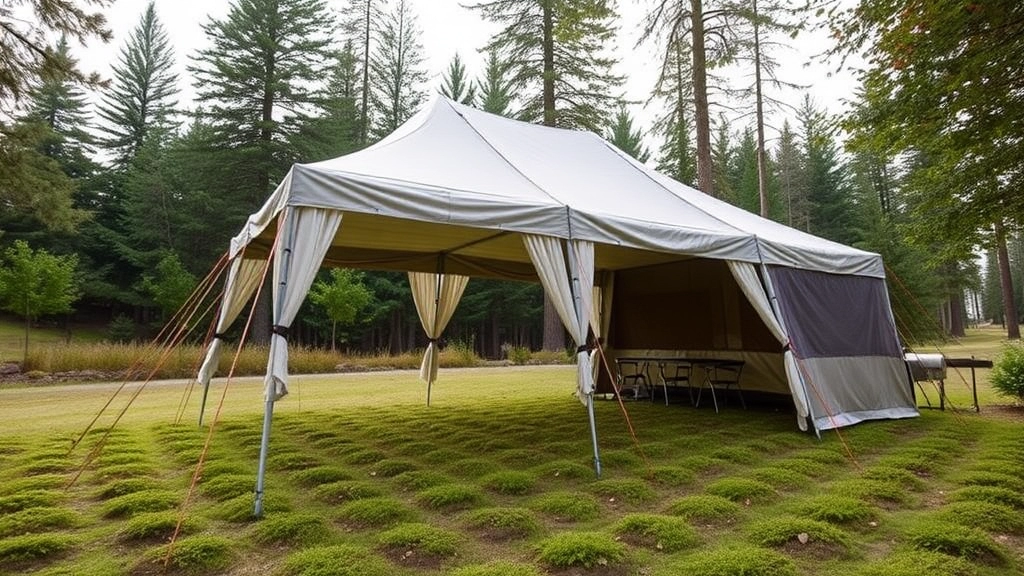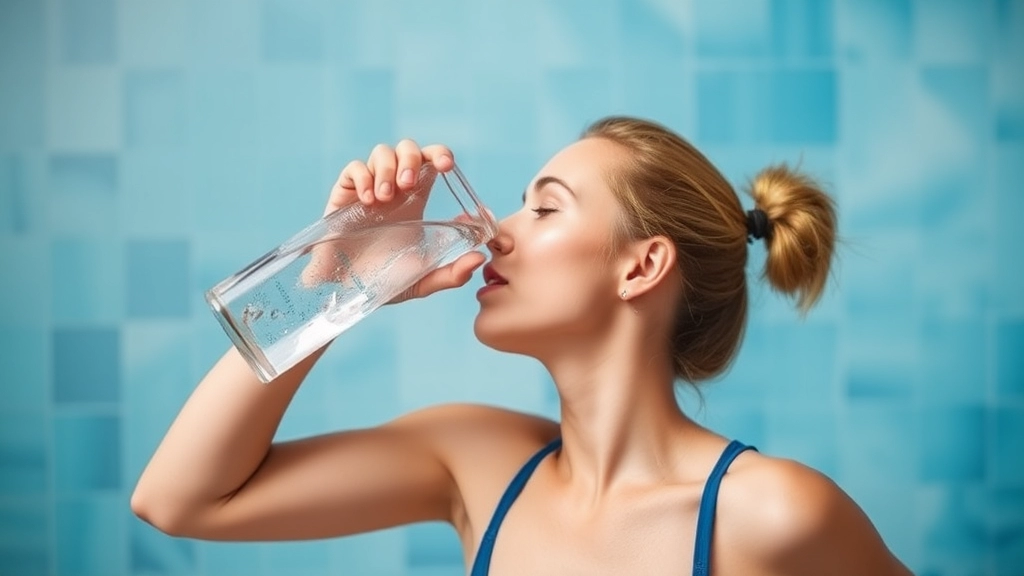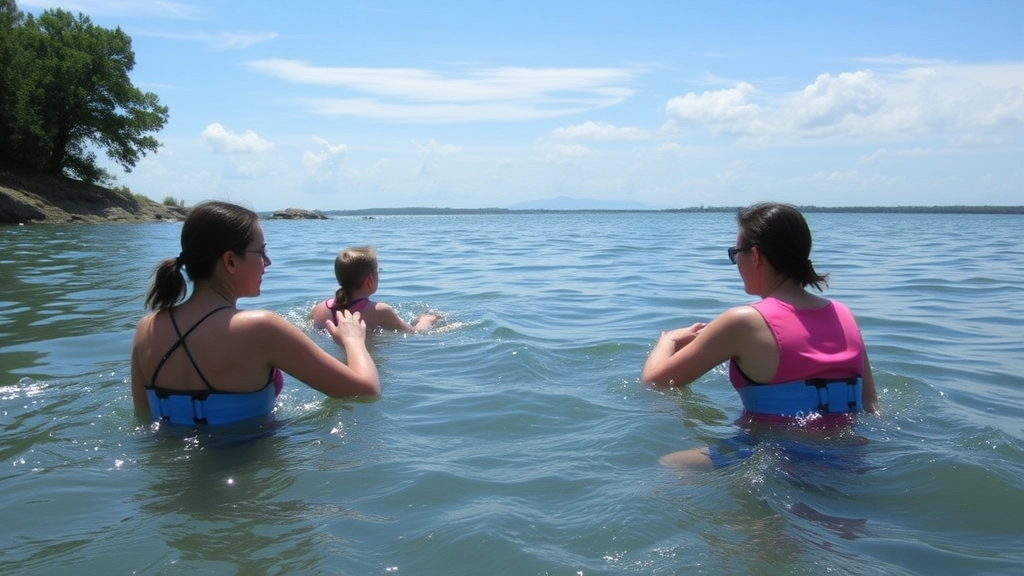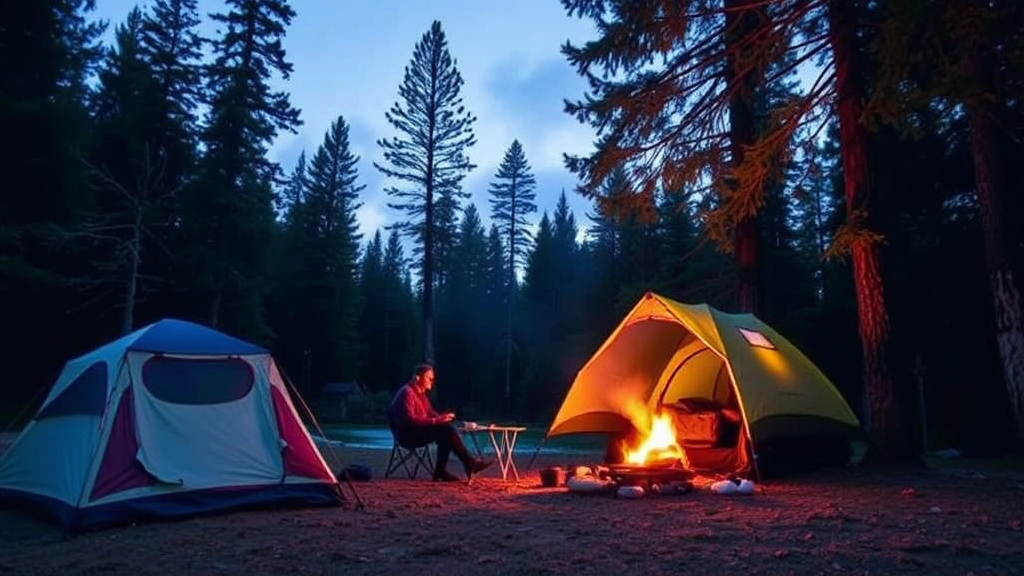How To Stay Cool Camping In Summer
Ever been out camping in the summer and felt like you were melting under the relentless sun? You’re not alone. In this article, we’ll explore How To Stay Cool Camping In Summer with practical tips and strategies. From choosing the right campsite to engaging in water activities, we’ll cover everything you need to beat the heat and enjoy your outdoor adventure.
We’ll delve into essential topics such as:
- Optimal tent setup
- Cooling gear must-haves
- Hydration strategies
- Dietary tips
Additionally, we’ll discuss how to:
- Sleep comfortably in hot weather
- Manage your time to avoid the midday sun
- Implement safety measures for extreme heat
Whether you’re a seasoned camper or a newbie, these insights will ensure your summer camping trip is cool, safe, and enjoyable.
Choosing the Right Campsite for Shade and Ventilation
Ever been roasted alive in your tent? Yeah, me too. Picking the right campsite can make or break your camping trip, especially when it’s scorching out. Let’s dive into some practical tips to keep your cool, literally.
Why Shade and Ventilation Matter
When it’s hot, the last thing you want is to be stuck in a tent that feels like an oven. Shade and ventilation are your best friends here. They can make the difference between a sleepless night and waking up refreshed.
Finding the Perfect Spot
Here’s what I look for when I’m scouting for that sweet spot:
- Natural Shade: Trees are your best bet. They not only block the sun but also help with airflow.
- Elevation: Higher ground tends to be cooler. Plus, it’s less likely to be damp.
- Wind Flow: Look for areas where the wind can pass through. A gentle breeze can be a lifesaver.
Real Talk: My Go-To Spots
I remember this one time, I picked a campsite right next to a river. The trees provided ample shade, and the cool breeze from the water was a game-changer. It was like nature’s air conditioning.
Practical Tips for Shade and Ventilation
- Orientation: Set up your tent with the door facing the wind. This helps with airflow.
- Avoid Valleys: These can trap heat and humidity.
- Use a Tarp: If natural shade is scarce, create your own with a tarp.
Checklist for Choosing the Right Campsite
- Shade: Look for trees or large rocks.
- Elevation: Higher is usually cooler.
- Wind: Ensure there’s good airflow.
- Ground Surface: Opt for grassy or sandy areas; they’re cooler than rocks or asphalt.
For more tips on making your camping experience enjoyable, check out our guide on summer camping hotspots in Texas. And if you’re looking to make your campsite even more fun, don’t miss our summer camp games that require no equipment.
Optimal Tent Setup and Maintenance

Alright, let’s talk tents. You’re out there, sweating buckets, and the last thing you want is a stuffy tent. How do you set up your tent to keep it cool?
First off, location is everything.
Find the Right Spot
- Shade is your best friend. Look for trees or large rocks.
- Avoid low spots. They can trap heat and moisture.
- Catch the breeze. Position your tent to face the wind.
Tent Setup Tips
Now, let’s get into the nitty-gritty of setting up your tent for maximum ventilation.
- Use a footprint or groundsheet. It adds an extra layer between you and the hot ground.
- Ventilation is key. Open all windows and vents. If your tent has a rainfly, consider removing it or at least partially lifting it to allow airflow.
- Elevate your tent. If you can, set it up on a slight incline. Hot air rises, so you want to be as high as possible without rolling out of your tent.
Maintenance Matters
Keeping your tent in tip-top shape is crucial. Here’s how:
- Clean it regularly. Dirt and grime can clog ventilation points.
- Check zippers and seams. A broken zipper can ruin your trip.
- Store it dry. Moisture can lead to mold and mildew, which can block airflow and make your tent smell like a gym bag.
Real Talk
Remember that time when you woke up drenched in sweat at 3 AM? Yeah, not fun.
I’ve been there, and trust me, these tips make a world of difference.
Quick Recap
- Location: Find shade, avoid low spots, catch the breeze.
- Setup: Use a groundsheet, maximize ventilation, elevate your tent.
- Maintenance: Keep it clean, check zippers, store it dry.
Got it? Good.
Now, go out there and enjoy your camping trip without turning into a puddle.
Cooling Gear Essentials
Ever been out camping and felt like you were roasting in an oven? Yeah, me too. When the sun’s beating down and the sweat’s pouring, you need the right gear to keep cool. Let’s dive into the must-haves for staying chill in the great outdoors.
Why Cooling Gear Matters
First off, why bother with cooling gear? Well, if you’ve ever tried to sleep in a tent that feels like a sauna, you know the struggle. Staying cool isn’t just about comfort; it’s about safety. Overheating can lead to heat exhaustion or even heat stroke. So, let’s arm ourselves with the right stuff.
Must-Have Cooling Gear
Here’s a breakdown of the essentials you need to pack:
- Portable Fans
- Battery-operated fans: These are lifesavers. Pop one in your tent to keep the air circulating.
- USB fans: If you’ve got a power bank, these can run for ages.
- Cooling Towels
- Evaporative cooling towels: Wet them, wring them out, and drape them around your neck. Instant relief!
- Microfiber towels: They dry quickly and are super absorbent.
- Reflective Tarps
- Reflective tarps: Set these up over your tent to deflect the sun’s rays. It makes a huge difference.
- Shade cloths: Less effective than reflective tarps but still helpful.
- Insulated Water Bottles
- Double-walled bottles: Keeps your drink cold for hours. Hydration is key, and cold water is a bonus.
- Cooling Gel Pads
- Cooling gel pads: Place them in your sleeping bag or under your pillow for a cooler sleep.
Real Talk: What Actually Works?
I’ve tried a bunch of these, and let me tell you, not all cooling gear is created equal. I once brought a cheap fan that died after an hour. Lesson learned. Invest in quality gear. For instance, those evaporative cooling towels? Absolute game-changers. I remember hiking in the Peak District, and that towel was the difference between a miserable trek and an enjoyable adventure.
Pro Tips for Using Cooling Gear
- Layer Up: Use a combination of reflective tarps and portable fans for maximum effect.
- Stay Wet: Keep your cooling towel damp. It works best that way.
- Strategic Placement: Position your fan to blow air across your cooling gel pad. It’s like an air conditioner for your tent.
Final Thoughts
So, there you have it. Cooling gear isn’t just a luxury; it’s a necessity when camping in hot weather. From portable fans to cooling towels, these essentials can make your outdoor experience a lot more bearable. Trust me, nothing beats the feeling of a cool breeze on a scorching day.
If you’re planning a camping trip and need some inspiration, check out these tips to stay cool and comfortable. And for those who love a good camping tune, don’t miss our list of top summer camping songs.
Hydration Strategies and Dietary Tips

Ever felt like you’re melting in the middle of a camping trip?
Yeah, me too.
Staying hydrated and eating right can make a world of difference.
Here’s how to keep your cool.
Hydration Strategies
Water is your best mate in hot weather.
But how much is enough?
Aim for at least 3 litres a day.
And more if you’re sweating buckets.
Here are some quick tips:
- Carry a reusable water bottle: Keep it filled and sip regularly.
- Electrolyte tablets: Pop one into your water to replace lost salts.
- Avoid alcohol and caffeine: They dehydrate you faster than you think.
- Infuse your water: Add slices of lemon or cucumber for a refreshing twist.
Dietary Tips
Eating right isn’t just about staying fit.
It’s about surviving the heat.
Here’s what works:
- Light meals: Heavy foods take longer to digest and can make you feel sluggish.
- High-water content foods: Think watermelon, cucumbers, and oranges.
- Salty snacks: They help retain water in your body.
- Avoid spicy foods: They can raise your body temperature.
Example: My Go-To Camping Snacks
I remember this one time, I packed only crisps and chocolate bars.
Big mistake.
I felt drained and dehydrated.
Now, I pack:
- Trail mix: Nuts and dried fruits are a great combo.
- Fresh fruits: Apples and grapes are easy to carry.
- Veggie sticks: Carrots and celery with a bit of hummus.
Trust me, it makes a huge difference.
Hydration Hacks
Feeling lazy?
Here are some hacks:
- Set a timer: Remind yourself to drink water every hour.
- Use hydration packs: They’re convenient, especially if you’re hiking.
- Freeze your water bottle: It’ll stay cool longer.
Sleeping Comfortably in Hot Weather
Ever tried to catch some Z’s in a tent that’s hotter than a sauna? Yeah, it’s not fun. But don’t worry, I’ve got your back. Let’s break down how to sleep comfortably in hot weather, so you wake up refreshed and ready for another day of adventure.
Real Questions and Worries
First off, I know what you’re thinking: “How do I sleep when it feels like I’m roasting alive?” or “Is it even possible to get a good night’s sleep in this heat?” Trust me, it is. I’ve been there, and I’m here to share some tried-and-true tips.
1. Choose the Right Sleeping Gear
Your sleeping gear can make or break your night. Here’s what you need:
- Lightweight Sleeping Bag: Opt for a sleeping bag designed for warm weather. Look for one with a temperature rating that matches the expected nighttime lows.
- Sleeping Pad: A good sleeping pad not only adds comfort but also provides a layer of insulation from the ground, which can actually help keep you cooler.
- Pillow: A small, packable pillow can make a big difference in your comfort level.
2. Ventilation is Key
Proper ventilation in your tent is crucial. Here’s how to maximise airflow:
- Open Vents and Windows: Most tents come with built-in vents and windows. Keep them open to let the breeze in.
- Mesh Panels: If your tent has mesh panels, use them. They allow for airflow while keeping bugs out.
- Set Up in the Shade: Pitch your tent in a shaded area to keep it cooler during the day.
3. Cooling Techniques
Sometimes, you need to get creative to stay cool. Try these:
- Wet Cloth: Dampen a cloth with water and place it on your forehead or neck to cool down.
- Portable Fan: A battery-operated fan can be a lifesaver. Place it near your head for a cool breeze.
- Cold Water Bottle: Fill a water bottle with cold water and place it at the foot of your sleeping bag to keep your feet cool.
4. Adjust Your Sleepwear
What you wear to bed matters. Follow these tips:
- Lightweight, Breathable Fabrics: Choose sleepwear made from materials like cotton or moisture-wicking fabrics.
- Less is More: In extreme heat, consider sleeping in minimal clothing to stay cooler.
5. Hydration and Nutrition
Staying hydrated and eating right can also impact your sleep:
- Drink Water: Make sure you’re well-hydrated throughout the day. Dehydration can make it harder to sleep.
- Light Meals: Avoid heavy, spicy meals before bed. Opt for lighter, cooler foods like salads or fruits.
6. Timing is Everything
When you go to bed and wake up can affect your comfort:
- Sleep Early or Late: Consider adjusting your sleep schedule to avoid the hottest parts of the night.
- Afternoon Nap: If you struggle to sleep at night, a short nap during the cooler part of the afternoon can help you stay rested.
For more tips on how to make your summer camping experience enjoyable, check out our Summer Camping Gear Tips and Fun Activities guide. If you’re still planning your next adventure, you might also find our list of Top Sleepaway Camps: A Parent’s Guide useful.
Engaging in Water Activities

Ever tried camping in scorching weather and wondered, “How on earth do I cool down?”
Water activities are your best mate.
Trust me, there’s nothing like a splash to beat the heat.
Why Water Activities?
First, let’s get real.
When it’s hot, your body craves coolness.
Water activities offer instant relief.
Plus, they’re a blast.
Types of Water Activities
Here are some water activities you can dive into:
- Swimming: Obvious, right? But it’s effective. Find a lake, river, or even a campsite pool.
- Canoeing/Kayaking: Not just fun, but also a workout. Paddle your stress away.
- Fishing: Relaxing and cooling. Just dip your feet in while waiting for a bite.
- Water Balloon Fights: Perfect for families. Quick to set up and loads of fun.
Gear You Need
Don’t forget the essentials:
- Swimwear: Duh.
- Water Shoes: For rocky or slippery surfaces.
- Life Jacket: Safety first, especially for kids.
- Fishing Gear: If you’re angling.
- Waterproof Bag: Keep your valuables dry.
Pro Tips for Water Activities
Here’s what I’ve learned from experience:
- Scout the Area: Know the water depth and current. Safety is key.
- Hydrate: Yes, even when you’re in water. Dehydration can sneak up on you.
- Sunscreen: Water reflects sunlight. You’ll burn faster than you think.
- Buddy System: Never go alone. Always have a mate watching your back.
Real Stories
Last summer, I camped near a river.
The heat was brutal.
We spent hours kayaking and swimming.
It was a game-changer.
Everyone felt refreshed and ready for more camping fun.
Why It Matters
Engaging in water activities isn’t just about cooling off.
It’s about making memories.
It’s about turning a scorching camping trip into an adventure.
So, next time you’re packing for a summer camp, remember your water gear.
Trust me, you’ll thank yourself later.
Water activities are the ticket to staying cool and having a blast.
Dive in and enjoy.
Related Topics
- Choosing the Right Campsite for Shade and Ventilation
- Optimal Tent Setup and Maintenance
- Hydration Strategies and Dietary Tips
Time Management to Beat the Heat
Ever found yourself sweltering in the midday sun, wondering if there’s a better way to plan your day while camping? Let’s dive into some practical strategies to manage your time and stay cool.
Why Time Management Matters
When you’re out camping, the sun is both your friend and your foe. It provides light and warmth, but too much can turn your adventure into a sweaty ordeal. Time management is key to ensuring you enjoy the great outdoors without overheating.
Plan Your Day Around the Sun
Here’s the deal: the sun is at its peak between 10 a.m. and 4 p.m. During these hours, the heat can be intense. So, what’s the game plan?
- Early Mornings and Late Afternoons: These are golden hours for activities. Whether you’re hiking, exploring, or setting up camp, aim to do it when the sun is lower in the sky.
- Midday Breaks: Use this time to relax in the shade, maybe read a book or take a nap. It’s not just about cooling down; it’s about conserving energy for when it’s cooler.
Scheduling Activities
Think of your day like a well-oiled machine. Here’s how you can structure it:
- Morning Routine:
- Wake up early and enjoy the cool morning air.
- Have a hearty breakfast to fuel your day.
- Engage in physical activities like hiking or cycling.
- Midday Chill:
- Find a shady spot and set up a hammock.
- Hydrate and snack on light, refreshing foods.
- Plan for future activities or simply relax.
- Afternoon Adventures:
- As the sun starts to set, get moving again.
- Explore nearby water bodies or trails.
- Prepare an early dinner to enjoy as the sun goes down.
Real-Life Example
I remember a trip where we didn’t plan our day, and we ended up hiking at noon. Big mistake. We were exhausted, and it took away from the fun. Lesson learned: timing is everything.
Safety Measures in Extreme Heat
Ever been out camping, feeling like you’re baking in an oven? Yeah, we’ve all been there. The sun’s relentless, and you’re just trying to keep cool. Extreme heat can be a real buzzkill if you’re not prepared. So, let’s dive into some no-nonsense tips to stay safe.
Stay Hydrated, Stay Alive
First things first, hydration. It’s your best mate in the heat. But how much water should you actually drink?
- Drink regularly: Don’t wait until you’re thirsty.
- Electrolytes matter: Water’s great, but sometimes you need a bit more. Think sports drinks or electrolyte tablets.
- Avoid alcohol and caffeine: They dehydrate you faster.
Dress Smart, Not Hard
What you wear can make or break your day. Here’s the lowdown:
- Lightweight, light-coloured clothing: Reflects the sun.
- Breathable fabrics: Cotton and moisture-wicking materials.
- Wide-brimmed hat: Keeps your face and neck shaded.
- Sunglasses: Protect your eyes from UV rays.
Find or Create Shade
Shade is your sanctuary. If you can’t find it, make it.
- Tarp or canopy: Easy to set up and move around.
- Natural shade: Trees and large rocks are your friends.
- Portable fan: Battery-operated fans can be lifesavers.
Know the Signs of Heat-Related Illnesses
Recognizing the symptoms early can save lives. Here’s what to watch for:
- Heat exhaustion: Heavy sweating, weakness, cold, pale, and clammy skin.
- Heat stroke: High body temp, hot, red, dry or moist skin, rapid pulse.
If you spot any of these, act fast:
- Move to a cooler place: Get out of the sun.
- Loosen clothing: Let your body breathe.
- Apply cool, wet cloths: Or take a cool bath.
- Sip water: Slowly, don’t gulp it down.
Plan Your Activities Wisely
Timing is everything. Here’s how to beat the heat:
- Early mornings and late evenings: Best times for strenuous activities.
- Midday siesta: Take a break during the hottest part of the day.
- Shorten your exposure: Don’t stay out in the sun for too long.
Tech to the Rescue
Sometimes, a bit of tech can make a world of difference.
- Cooling towels: These things are magic.
- Portable misting fans: Spray and cool at the same time.
- Apps: Weather apps can alert you to extreme heat conditions.
Buddy System
Never underestimate the power of having a mate with you.
- Check on each other: Regularly.
- Share supplies: Water, shade, and cooling gear.
- Emergency plan: Know what to do if things go south.
For more tips on staying cool and safe, check out our guide on keeping your camper cool in summer. And if you’re planning activities, our summer camp activity ideas can help make your experience even more enjoyable.
FAQs on How to Stay Cool Camping in Summer
How important is the location of my tent to stay cool?
Location is crucial. Look for shaded areas, avoid low spots that trap heat and moisture, and position your tent to catch the breeze.
What are the best ways to set up my tent for maximum ventilation?
Use a footprint or groundsheet, open all windows and vents, and consider removing or lifting the rainfly. Elevating your tent slightly can also help.
How should I maintain my tent to ensure it stays cool?
Regularly clean your tent to prevent dirt from clogging ventilation points, check zippers and seams, and always store it dry to avoid mold and mildew.
How much water should I drink while camping in hot weather?
Aim for at least 3 liters a day, and more if you’re sweating heavily. Hydration is key to staying cool and healthy.
What are some good hydration strategies for camping?
Carry a reusable water bottle, use electrolyte tablets, avoid alcohol and caffeine, and infuse your water with lemon or cucumber for a refreshing twist.
What types of foods should I eat to stay cool while camping?
Opt for light meals, high-water content foods like watermelon and cucumbers, salty snacks to retain water, and avoid spicy foods that can raise your body temperature.
What are some ideal snacks to pack for a summer camping trip?
Trail mix, fresh fruits like apples and grapes, and veggie sticks with hummus are great options. They help keep you energized and hydrated.
What water activities can help me stay cool while camping?
Swimming, canoeing/kayaking, fishing, and water balloon fights are excellent ways to cool down and have fun.
What gear do I need for water activities while camping?
Essential gear includes swimwear, water shoes, a life jacket, fishing gear, and a waterproof bag to keep your valuables dry.
What safety tips should I keep in mind for water activities?
Scout the area for water depth and current, stay hydrated, use sunscreen, and always have a buddy with you for safety.
Why are water activities important during a summer camping trip?
Water activities provide instant relief from the heat, make the camping experience more enjoyable, and help create lasting memories.
References
-
Tent Camping Checklist by REI
-
How to Choose and Set Up a Tent by Backpacker
-
How to Maintain Your Tent by Outside Online

